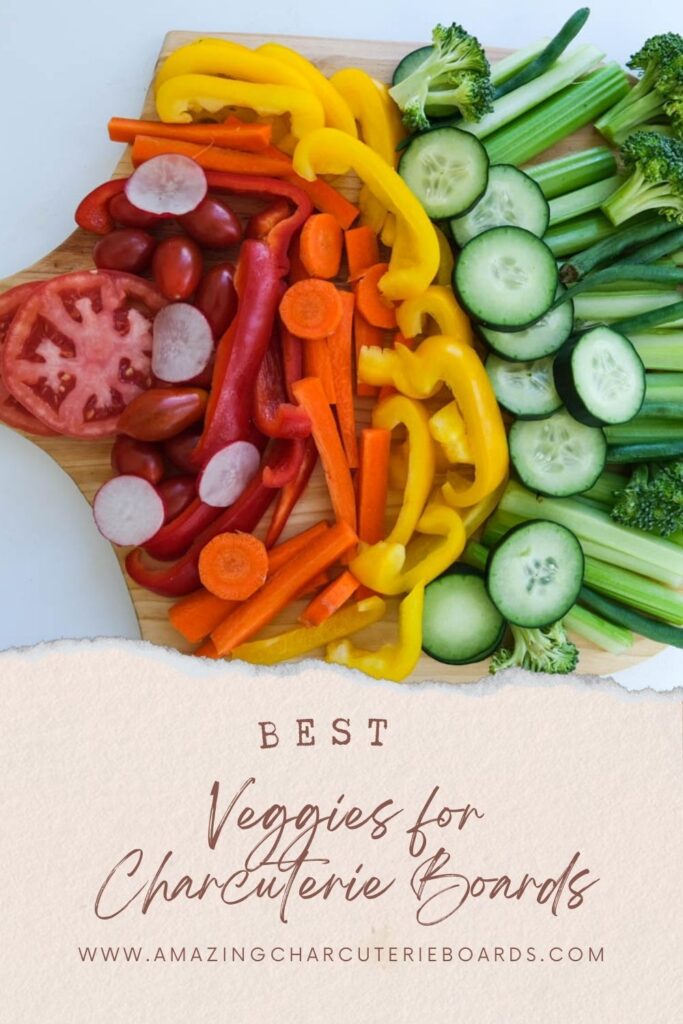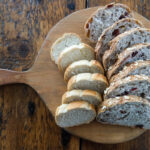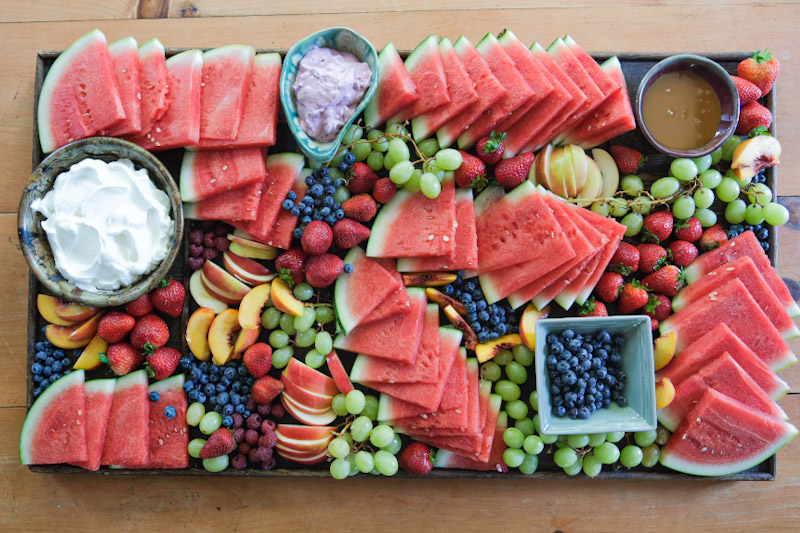Vegetables are one of the main types of ingredients commonly found on a charcuterie board. The best vegetables for charcuterie board design add color and crunch to a general charcuterie board design and can be served alongside cheese, nuts, crackers, meat, and more. You can also create a healthy and delicious charcuterie board with just vegetable and a dip.
Below you can find a list of some of the best vegetables to include on a charcuterie board or scroll down for some of the less common vegetables like okra and squash.
Contents
List of the Best Vegetables for Charcuterie Board Designs
Commonly used vegetables:
- Tomatoes (small or sliced)
- Carrots
- Cucumbers
- Broccoli
- Celery
- Peppers
- Snap Peas
- Green Beans
- Califlower
- Radishes
Uncommon Vegetables for Charcuterie Boards
- Beets
- Potatoes
- Onions
- Mushrooms
- Squash/Pumpkin
What to Consider When Selecting the Best Vegetables for Charcuterie Board Designs
Shape: most vegetables will be cut into smaller pieces when served on a charcuterie board and there are many ways to cut most vegetables. Consider the shape of the vegetables and how you may want to cut it into bite sized pieces. Some vegetables (like celery) are best left or cut into long strips.
Color: color is an important consideration, especially when you are making a charcuterie board for a holiday. An example is to use red tomatoes during the Christmas season, or orange carrots during the fall.
Size: If you are serving the vegetables whole, the overall size is important. Ideally the charcuterie board vegetables are cut into bite size pieces.
Texture: If you are putting together a charcuterie board that mixes different types of ingredients the overall texture of the vegetables matters. Do you want to add a bit or crunch, or perhaps something softer like a tomato slice will stack well on cheese and crackers.
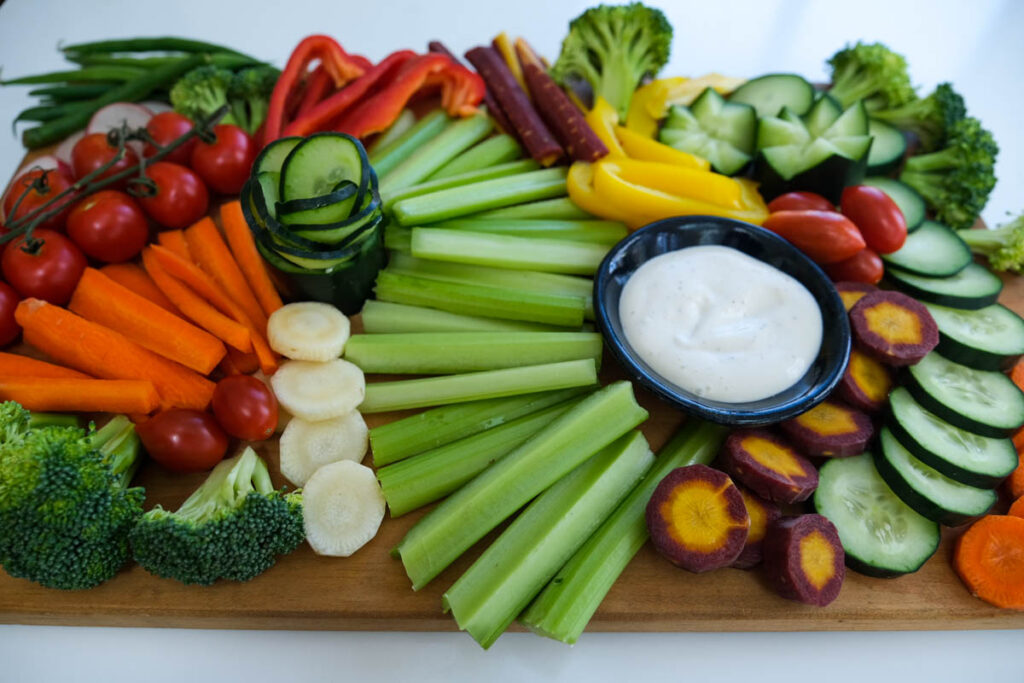
Best Vegetables for a Charcuterie Board
Below you can find some general information on the best vegetables for a charcuterie board as well as ideas on how to cut the vegetables.
Tomatoes (small or sliced)
Tomatoes make a great vegetable for a charcuterie board and come in a variety of colors and sizes. The easiest way to serve tomatoes is by adding cherry tomatoes to a colorful charcuterie board. These are already bite sized and come in yellows, reds, and oranges. You can also slice tomatoes and serve them with mozzarella or on an Italian charcuterie board. If you do serve tomatoes cut into slices, remember that this gets messy and napkins are a good idea!
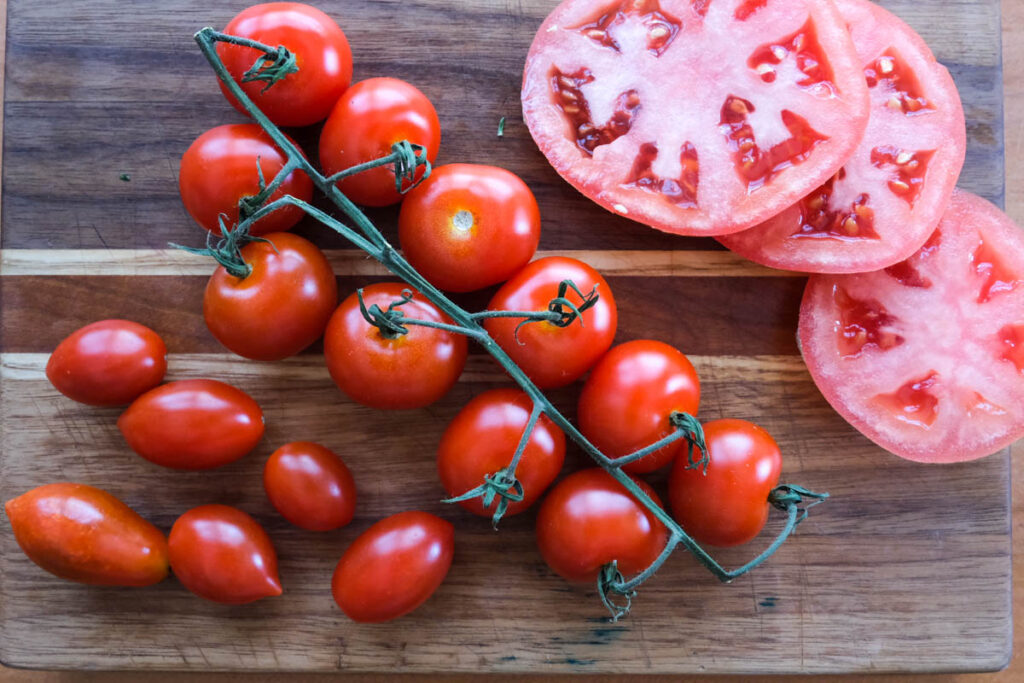
Carrots
Carrots also come in a number of different colors and can be cut into dimes or sliced into long strips. Strips make it easy to pick up and dip into hummus or other vegetable dips. Orange carrots are a great addition, but also consider purple or white carrots for a bit more color and a slightly different flavor.
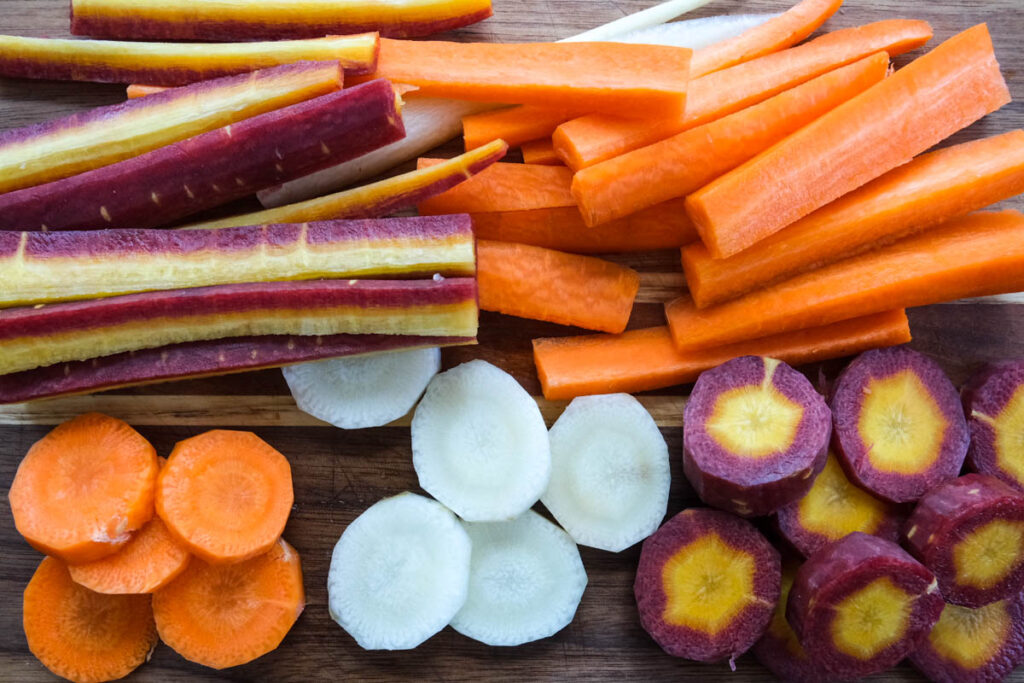
Cucumbers
I add cucumbers regularly to my charcuterie boards as we pair well with a lot of different types of food and are easy to pick up and eat. Cucumbers can also be sliced in many different ways. Consider cutting them into round slices, long strips or even decorative cucumber designs to add to your charcuterie board.

Broccoli and Cauliflower
Broccoli can be added to a simple charcuterie board or make a great addition to a vegetable charcuterie board. Broccoli has a strong taste and a different shapes from many of the other vegetables making it an interesting design element and texture on the charcuterie board. Cauliflower also makes a good choice and has slightly less flavor compared to broccoli.

Celery
Like carrots, celery makes a great vegetable to include on a charcuterie board alongside a vegetable dipping sauce. Cut the celery into long strips to make it easy to pick up and dip. Long strips of celery also make an interesting element to la our on a charcuterie board. Lay the strips in an arc or a row between other ingredients.

Peppers
Peppers add a burst of color to any charcuterie board. The easiest way to cut peppers is in long strips, but you can also cut them into circles. The most common peppers on a charcuterie board are colorful sweet peppers, but you can also add hot peppers on a Mexican themed charcuterie board like this taco charcuterie. If you are going to serve hot peppers, let your guests know so they don’t unknowingly take a large bit expecting sweet peppers!

Snap Peas
Snap peas are a good addition to a charcuterie board and they are quick and easy to add. Like the other vegetable above, you can serve them with a dip, but since these are crispy and sweet you can also serve them as they are. Put them in a bowl or lay them out between other ingredients on a charcuterie board.
Green Beans
Like snap peas, green beans can be served on a charcuterie board raw and crispy. Leave them long and easy to pick up.
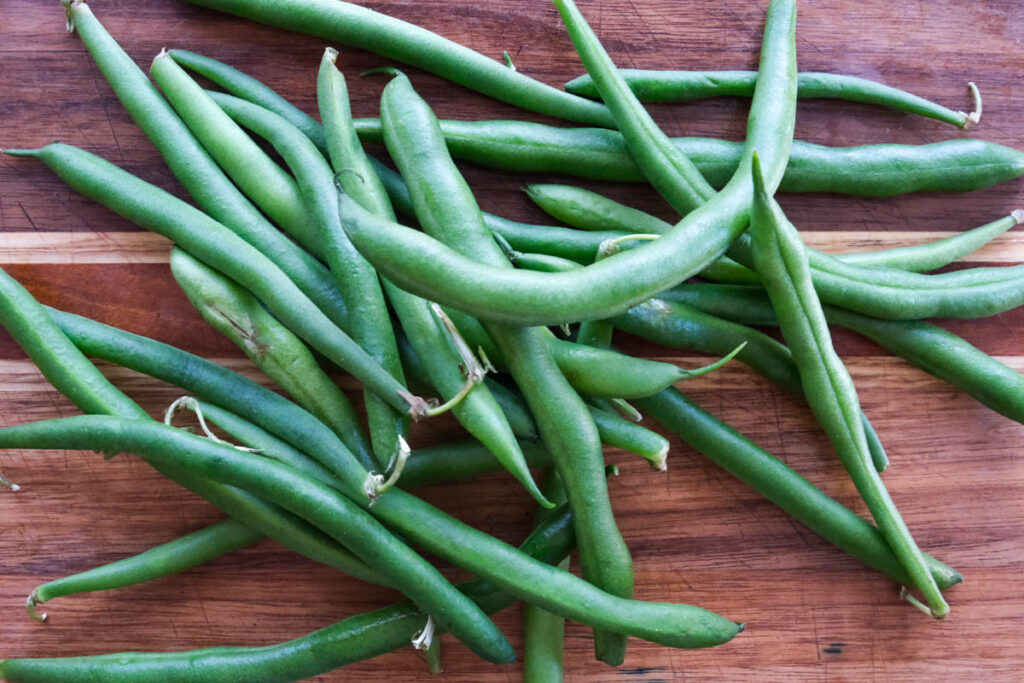
Radishes
Radishes are a fun addition to a charcuterie board and add beautiful color and design. Spicey and crispy, radishes add a bit of a pop to a board in terms of taste, but also have a colorful center which make them a very decorative addition. In addition to slices, radishes can also be cut into a number of different decorative shapes such as flowers.

Less Common Vegetables for Charcuterie Boards
The vegetables listed below are less common vegetables for charcuterie board designs. Some of these are difficult to pick up or need to be cooked making them only appropriate for certain charcuterie boards.
Beets: Beets are delicious but stain everything red. They are best served on a charcuterie board when they are stacked on top of something else. Consider stacking them on thin slices of bread with goat cheese.
Potatoes: Potatoes make an interesting addition to a charcuterie board. The best way to serve them is to make a baked potato charcuterie board for dinner.
Onions: Onions are not commonly eaten alone, but they make a great addition to a smoked salmon charcuterie board.
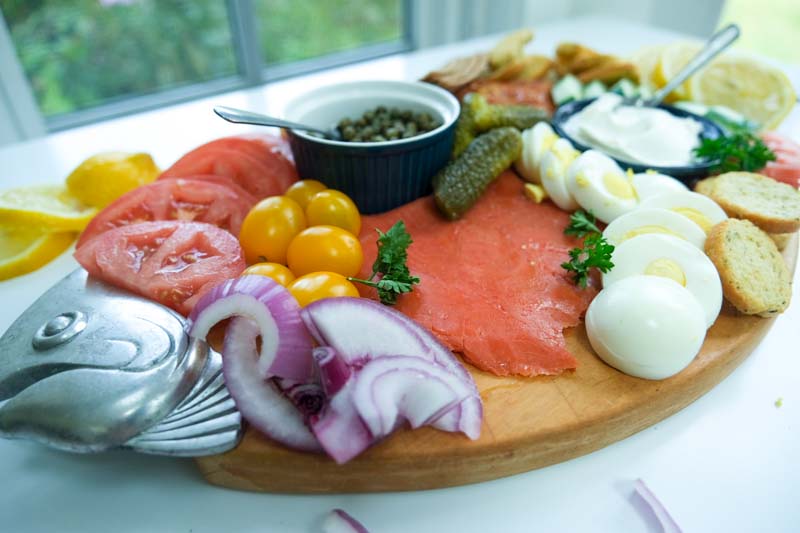
Mushrooms: mushrooms can be served raw, pickled, or soaked in herb and oil. If you aren’t serving meat on a charcuterie board but still want something savory, mushrooms make a great choice.
Squash/Pumpkin: This is another uncommon vegetable on a charcuterie board. Squash and pumpkin are soft when cooked and are best served stacked with other ingredients, or from something fun, check out this soup and bread charcuterie board.
Other vegetables include: zucchini, asparagus, okra’

Looking for more ingredients to add to your next charcuterie board? You may want to consider:
- Best Bread for Charcuterie Boards
- Best Dried Fruit for Charcuterie Boards
- Best Crackers for Charcuterie Boards
- Best Fruit for Charcuterie boards
- Best Pickles for Charcuterie Board Designs
